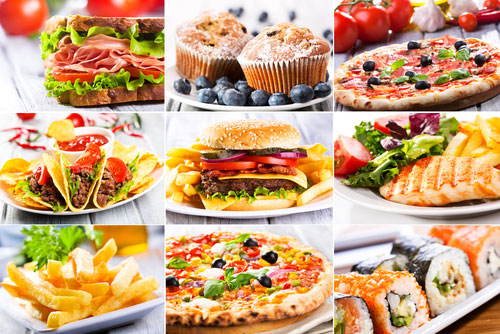
Lots of subtle factors are at play when you eat a meal. How food is presented, the color and size of the plate it’s served on and the aroma are all factors that affect our desire to eat a particular food. It can even impact how much you eat when you sit down to a meal. Chances are you don’t think much about the texture of the foods you eat, at least not consciously, but a new study shows a food’s texture influences how healthy and calorie rich we perceive a food to be. This may affect how much we eat of it too.
Food Texture and Perceived Calorie Content
In a study published in the Journal of Consumer Researcher, researchers asked a group of volunteers to eat a variety of food items that differed in texture. Some were soft while other food samples were hard. Some had a smooth texture while others had a rough or irregular texture. The participants were more likely to perceive the items that were rough and hard as lower in calories and ate more of them as a result.
In still another study, participants were given bite-size brownies, some hard and some soft, to munch on while watching television commercials. One group was asked a question about the calories in the brownies while the other group was not. When asked to focus on calories, the participants ate more of the hard brownies. When calories weren’t mentioned they ate more of the soft ones.
In the minds of these brownie-munching participants, the hard brownies were perceived to be lower in calories. Why might this be? According to experts, it has to do with a phenomenon called “oral haptics-calorie estimation.” In simple terms, this means we unconsciously form an opinion about how calorie-rich a food is based on how it feels in our mouth and how long we have to chew it. This may be based on past experiences with similar foods.
For example, you may associate a hard food, regardless of how healthy or low in calories it actually is, with other hard foods that are low in calories like apples or raw carrot sticks while you associate soft foods with foods that are creamier in texture because they’re higher in calories and fat. Of course, this isn’t always true. Potato chips are hard and rough but certainly, aren’t healthy or low in calories. This shows how our subconscious mind influences our perception of what we eat – and sometimes causes us to make the wrong choices.
Unhealthy Foods Taste Better?
An interesting study published in the journal Appetite showed people tend to judge foods that don’t look or taste as good as healthier than ones that do. There are lots of other ways our brains fool us into making unhealthy foods choices or eating more than we planned on. There’s a phenomenon called “vicarious goal fulfillment” that fast food restaurants take advantage of. They lure you in with healthy options like salads but you end up ordering the French fries instead. How does that work? When you contemplate ordering something healthy it subconsciously satisfies that goal even if you choose an extra-greasy cheeseburger, fries and a milkshake instead. What we think is pretty powerful!
Food Label Trickery
Labels on food products are tricky too. People tend to judge a food product by what’s on the front of the label. Phrases like “low fat,” and “low in sugar” give the impression a product is healthy, creating a “health halo.” Most people don’t look beyond the label to read the “fine print.” So they don’t discover it contains 24 grams of sugar and 400 calories per serving. Even the word “organic” sways people in unexpected ways. According to research carried out a the Cornell University Food and Brand Lab, college students perceived organic snacks to be tastier, lower in calories and higher in fiber than non-organic ones.
Utensils Matter Too
Research even shows whether you use a fork or knife to eat a food alters the perception of its taste. Some observations discovered through research:
Cheese tastes saltier when you eat it with a knife
Food tastes better on a white plate
Hot chocolate tastes better in an orange cup
Yogurt tastes denser when eaten with a plastic spoon
People eat more on brightly colored plates – red, yellow and less on blue or green plates
Smaller plates make portions seem larger while larger ones have the opposite effect
The Bottom Line?
Your mind’s always at work making subconscious judgments about what you eat. These judgments influence the dietary choices you make on an unconscious level. Don’t let your subconscious mind lead you astray. Train yourself to read the “fine print” on menus and food labels so you can make informed decisions about what you put in your mouth.
References:
Medical News Today. “How Food Texture Impacts Its Perceived Calorie Content”
International Journal of Obesity (2003) 27, 1152-1166.
Brain Physics. “Your Mind’s Unconscious Ways of Sabotaging Healthy Choices”
The Atlantic. “The Way Food Tricks Our Brains”
Cornell University Food and Brand Lab. “Do Organic Snack Foods Taste Differently
Because of Their Label?”
Journal of Consumer Research, 34:3 (October) 301-314.
Live Science. “To Cut Out Salt, Use a Knife”

